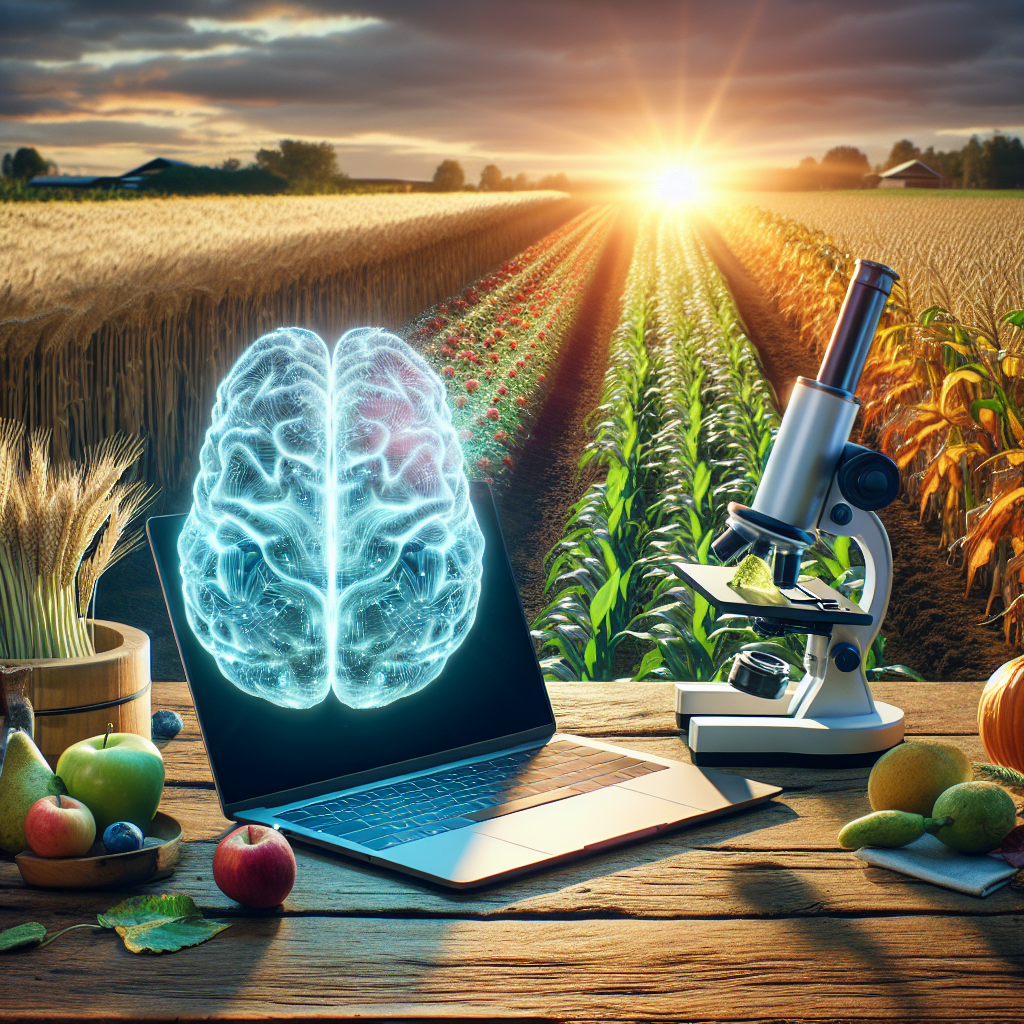AI Technologies for Crop Disease Diagnosis
Introduction
In recent years, the use of artificial intelligence (AI) technologies in agriculture has been gaining momentum. One area where AI is proving to be particularly impactful is in crop disease diagnosis. By using AI algorithms, farmers and agronomists can quickly and accurately identify crop diseases, allowing for prompt treatment and mitigation efforts. In this article, we will explore the different AI technologies being used for crop disease diagnosis and their benefits.
Types of AI Technologies for Crop Disease Diagnosis
1. Machine Learning
Machine learning is a subset of AI that involves training algorithms to learn from data and make predictions or decisions. In crop disease diagnosis, machine learning algorithms can be trained on large datasets of images of healthy and diseased plants to identify patterns and characteristics associated with different diseases. Once trained, these algorithms can analyze new images of plants and accurately diagnose diseases.
2. Deep Learning
Deep learning is a type of machine learning that uses artificial neural networks to learn from data. Deep learning algorithms are particularly well-suited for image recognition tasks, making them a powerful tool for crop disease diagnosis. By using deep learning algorithms, researchers can develop models that can accurately classify images of plants and identify diseases with a high degree of accuracy.
3. Convolutional Neural Networks (CNNs)
CNNs are a type of deep learning algorithm that is commonly used for image recognition tasks. CNNs are designed to automatically and adaptively learn spatial hierarchies of features from image data. In crop disease diagnosis, CNNs can be trained on large datasets of plant images to detect patterns and characteristics associated with different diseases. This allows for accurate and efficient diagnosis of crop diseases.
Benefits of AI Technologies for Crop Disease Diagnosis
1. Early Detection
One of the key benefits of using AI technologies for crop disease diagnosis is early detection. By using AI algorithms to analyze images of plants, farmers and agronomists can quickly identify diseases at an early stage before they spread and cause significant damage. Early detection allows for prompt treatment and mitigation efforts, ultimately helping to minimize crop losses.
2. Accuracy
AI technologies can provide highly accurate diagnoses of crop diseases. By training algorithms on large datasets of plant images, AI models can learn to distinguish between healthy and diseased plants with a high degree of accuracy. This accuracy is crucial for ensuring that the right treatment is administered to the affected crops, leading to better outcomes for farmers and improved crop yields.
3. Efficiency
AI technologies can also improve the efficiency of crop disease diagnosis. By automating the process of analyzing images of plants, AI algorithms can quickly process large amounts of data and provide timely diagnoses. This efficiency allows farmers and agronomists to make informed decisions about treatment options and take action before diseases spread further.
FAQs
Q: How does AI technology actually diagnose crop diseases?
A: AI technologies for crop disease diagnosis work by analyzing images of plants and identifying patterns and characteristics associated with different diseases. By training algorithms on large datasets of plant images, AI models can learn to distinguish between healthy and diseased plants and provide accurate diagnoses.
Q: Are AI technologies for crop disease diagnosis expensive?
A: While the initial investment in AI technologies for crop disease diagnosis may be relatively high, the long-term benefits can outweigh the costs. By enabling early detection, accurate diagnoses, and improved efficiency, AI technologies can ultimately help farmers save money by minimizing crop losses and improving yields.
Q: Can AI technologies be used for all types of crop diseases?
A: AI technologies can be used to diagnose a wide range of crop diseases, including fungal, bacterial, and viral infections. By training algorithms on diverse datasets of plant images, AI models can learn to recognize patterns associated with different diseases and provide accurate diagnoses.
Q: How can farmers access AI technologies for crop disease diagnosis?
A: There are a growing number of companies and research institutions that are developing AI technologies for crop disease diagnosis. Farmers can access these technologies through partnerships with technology providers, research collaborations, or by investing in their own AI capabilities.
Conclusion
AI technologies have the potential to revolutionize crop disease diagnosis by enabling early detection, accurate diagnoses, and improved efficiency. By leveraging machine learning, deep learning, and convolutional neural networks, farmers and agronomists can quickly and accurately identify crop diseases, leading to better outcomes for crops and improved yields. As AI technologies continue to advance, we can expect to see even greater benefits in the field of crop disease diagnosis.

